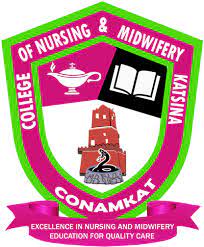CRS Keypoints: The Triumphal Entry and the cleansing of the Temple; The Triumphal Entry and the cleansing of the Temple, as recorded in Matthew 21:1-17, Mark 11:1-19, and Luke 19:29-48, are significant episodes in the life of Jesus.
GAIN ADMISSION INTO ANY NIGERIAN UNIVERSITY WITHOUT JAMB – REGISTER FOR IJMB TODAY
This class note is for people sitting for the following examinations: JAMB, WAEC, NECO, GCE, IJMB
This CRS note aims to recount the events of the Triumphal Entry and the cleansing of the Temple, explore their significance, and examine the hostility they generated towards Jesus.
CRS Keypoints: The Triumphal Entry and the cleansing of the Temple
II. The Triumphal Entry and the Cleansing of the Temple
a. The Triumphal Entry:
- Jesus instructed His disciples to fetch a donkey and its colt, fulfilling the prophecy of Zechariah 9:9.
- He entered Jerusalem riding on the colt, while crowds spread their garments and palm branches on the road, proclaiming Him as the Messiah.
- The people hailed Jesus with shouts of “Hosanna to the Son of David! Blessed is He who comes in the name of the Lord!”
b. The Cleansing of the Temple:
- Jesus arrived at the Temple and witnessed the corruption and commercialization of the sacred space.
- He overturned the tables of the moneychangers and the seats of those selling doves, rebuking them for turning God’s house into a den of thieves.
- Jesus emphasized the Temple’s purpose as a house of prayer for all nations.
III. Significance of the Triumphal Entry and the Cleansing of the Temple
a. Triumphal Entry:
- The Triumphal Entry fulfilled Messianic prophecies, portraying Jesus as the long-awaited King and the fulfillment of God’s promises.
- The acclamations of the crowd revealed the widespread recognition of Jesus as the Messiah, generating anticipation for His kingdom.
b. Cleansing of the Temple:
Study Other CRS Keypoints Here
- The cleansing of the Temple highlighted Jesus’ zeal for true worship and the restoration of the proper reverence for God’s house.
- It emphasized the need for spiritual purity and the removal of practices that hindered genuine worship.
- Jesus’ actions demonstrated His authority over the religious establishment and His role as the ultimate reformer.
IV. Hostility Caused by the Cleansing of the Temple
a. Threat to Religious Authorities:
- The cleansing of the Temple directly challenged the authority and practices of the religious leaders.
- Jesus’ actions exposed their corruption, disrupting their lucrative business within the Temple complex.
- The cleansing threatened their power and control over religious affairs, leading to resentment and hostility towards Jesus.
b. Perception of Rebellion:
Study Other CRS Keypoints Here
- The cleansing of the Temple was seen by some as an act of rebellion against the Roman authorities, who closely monitored any potential uprisings during Passover.
- This perception fueled concerns among the religious leaders, contributing to their growing opposition to Jesus.
V. Conclusion
The Triumphal Entry and the cleansing of the Temple were pivotal events in Jesus’ ministry. The Triumphal Entry confirmed Jesus as the promised Messiah, while the cleansing of the Temple highlighted His authority and zeal for true worship.
However, these actions also generated hostility towards Jesus, as they challenged the religious establishment and posed a perceived threat to both religious and political authorities. These events ultimately set the stage for the unfolding conflicts that would lead to Jesus’ crucifixion.
Kindly support us, by using the Student Village forum for all educational conversations. Click here






